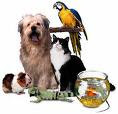You can simplysdilute a few drops in distilled water or you can use water and a mixture of aloe, witch hazel or cider vinegar. Thestraditional recommendation is to use 20 to 30 drops of oil per eight ounces of liquid. Any less might not beseffective and any more might be toxic to the pet. Oils can also be diluted in vodka or brandy and dabbed on the bottom of the pet's paws or on an acupressure pointssuch as the tips of the ears. This is the technique to use if you are dealing with a panicky pet. Never feed your petsalcohol or essential oil directly.Essential oils are also effective flea and tick repellents and are nearly as effective as sprays and powders thatscontain a lot of toxic chemicals. Oils such as peppermint, citronella, lavender, eucalyptus, lemon, geranium, bay andsmyrrh have been components of herbal flea sprays and flea collars for many years. You can easily make your own fleasand tick spray by combining about 25 drops of any of these oils into eight ounces of water. Shake the mixture wellsand spray it on your pet, being careful to shield its eyes from mist. This mixture can also be sprayed anywhere thatsyou suspect there may be a breeding bug infestation. When using essential oils it is also essential for you to remember that a dog or cat's sense of smell is much more acute than our own. Signs that an aromatherapy treatment is too overwhelming for your pet are tearing eyes, sneezing, pacing or whining. Cats may lick themselves excessively and dogs may rub their head on the ground in order to escapesthe smell. Many pets also have allergies to essential oils. For instance, chamomile is related to the ragweed plant,swhich is a common allergen for both pets and humans. This is why it is so important to use a mild solution at firstsand use your powers of observation the first few times you use an essential oil mixture on a pet.
